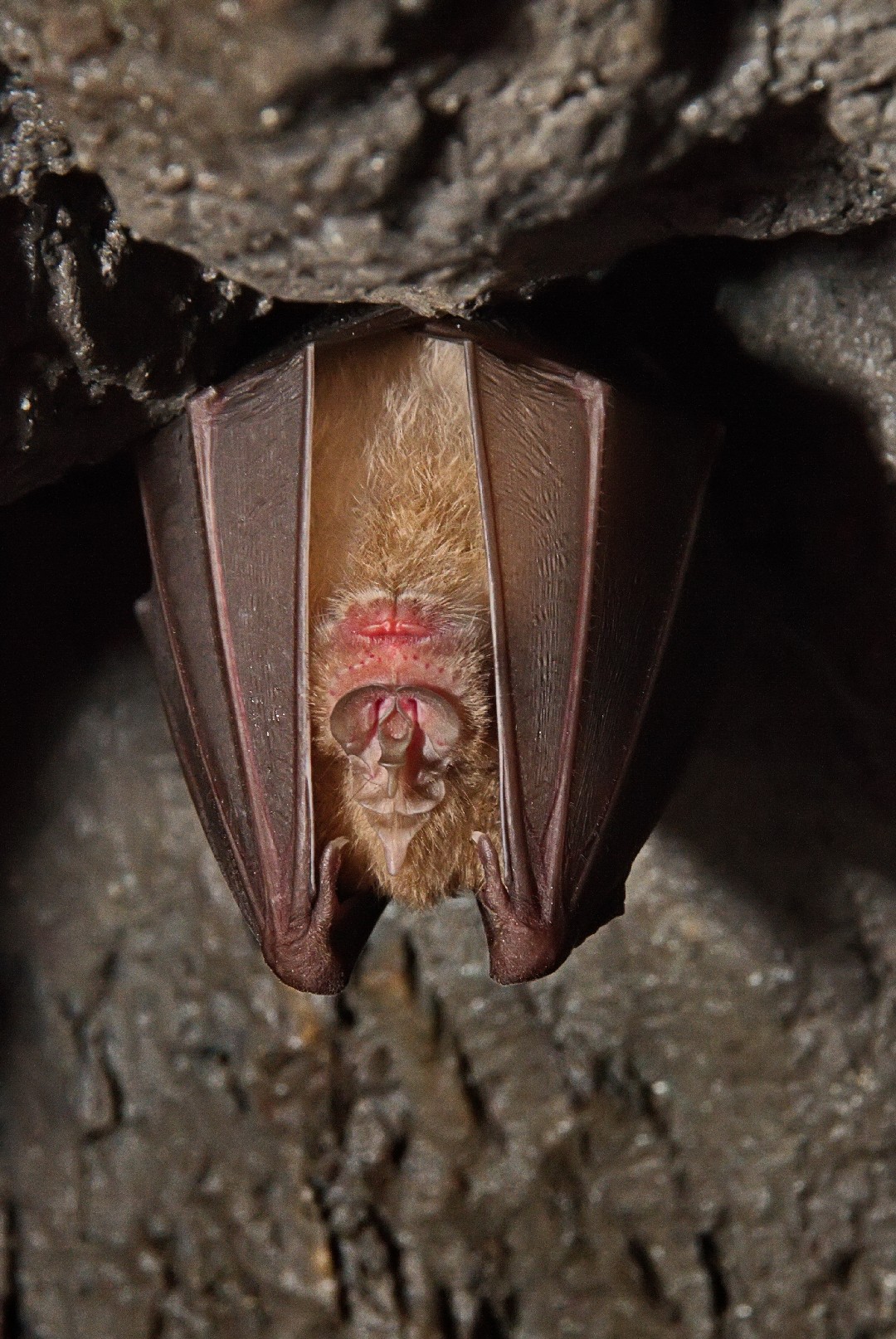Greater horseshoe bat
A species of Horseshoe bat Scientific name : Rhinolophus ferrumequinum Genus : Horseshoe bat
Greater horseshoe bat, A species of Horseshoe bat
Scientific name: Rhinolophus ferrumequinum
Genus: Horseshoe bat
Content
Description People often ask General Info
 Photo By Oleksander Zakletskiy , used under CC-BY-4.0 /Cropped and compressed from original
Photo By Oleksander Zakletskiy , used under CC-BY-4.0 /Cropped and compressed from original Description
The greater horseshoe bat is the largest horseshoe bat in Europe. It has a distinctive noseleaf, which has a pointed upper part and a horseshoe shaped lower part. Its horseshoe noseleaf helps to focus the ultrasound it uses to 'see'. The greater horseshoe bat also has tooth and bone structures that are distinct from that of other rhinolophids. Its first premolar on the upper jaw protrudes from the row of teeth. For other horseshoe bats, this premolar is very small or non-existent. Also in comparison to its relatives, the greater horseshoe bat has relatively short third and fourth metacarpal bones in its wings. It also lacks a tragus. The Greater Horseshoe Bat is, on average, between 57–71 millimetres (2.2–2.8 in) long, with a 35–43 mm tail (1.4–1.7 in) and a 350–400 mm wingspan (14–16 in); Rhinolophus ferrumequinum also exhibits slight sexual dimorphism, with females being a bit larger than males. The fur of the species is soft and fluffy, with the base of hairs being light grey, the dorsal side hair grey brown and the ventral side grey-white, with juvenile bats having more of an ash-grey tint to their fur. Wing membranes and ears are light grey-brown. The greater horseshoe bat weighs up to 30 grams (1.1 oz) and can live up to 30 years 
People often ask
General Info
Lifespan
30-31 years
Diet
The dietary habits of greater horseshoe bat revolve primarily around insectivory; it prefers consuming arthropods. Notably, it predominantly feasts on moths, demonstrating a marked preference for those of the Lepidoptera order, employing a strategy of snatching preys from surfaces while commuting or foraging.
Appearance
Greater horseshoe bat is a small to medium-sized bat, with dense, woolly fur. Its color ranges from chestnut to dark brown, lighter on the underside. The most distinct feature is the horse-shoe shaped noseleaf, used for echolocation. Both sexes appear similar, although females may be slightly larger. Adult bats have long wings and a tail enclosed in the interfemoral membrane. The broad ears are separated and rounded.
Behavior
Greater horseshoe bat is nocturnal and exhibits echolocation for precision in food location and navigation. These bats are colonial, living in large roosts, often found in caves, mines, or buildings. In summer, females create maternity colonies, separated from males. Unique to greater horseshoe bat is their hibernation behavior, solitary and inactive most of the winter, in caves or old mines. They feed on insects, displaying agile flight and hunting techniques.
Population
Decreasing
Scientific Classification
Phylum
Chordates Class
Mammals Order
Bats Family
Horseshoe bats Genus
Horseshoe bat Species
Greater horseshoe bat